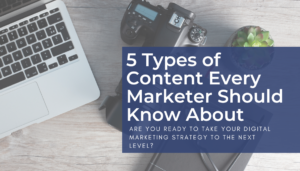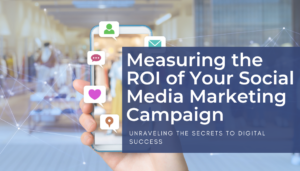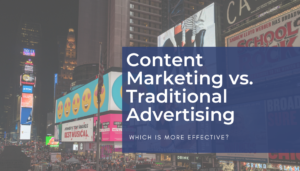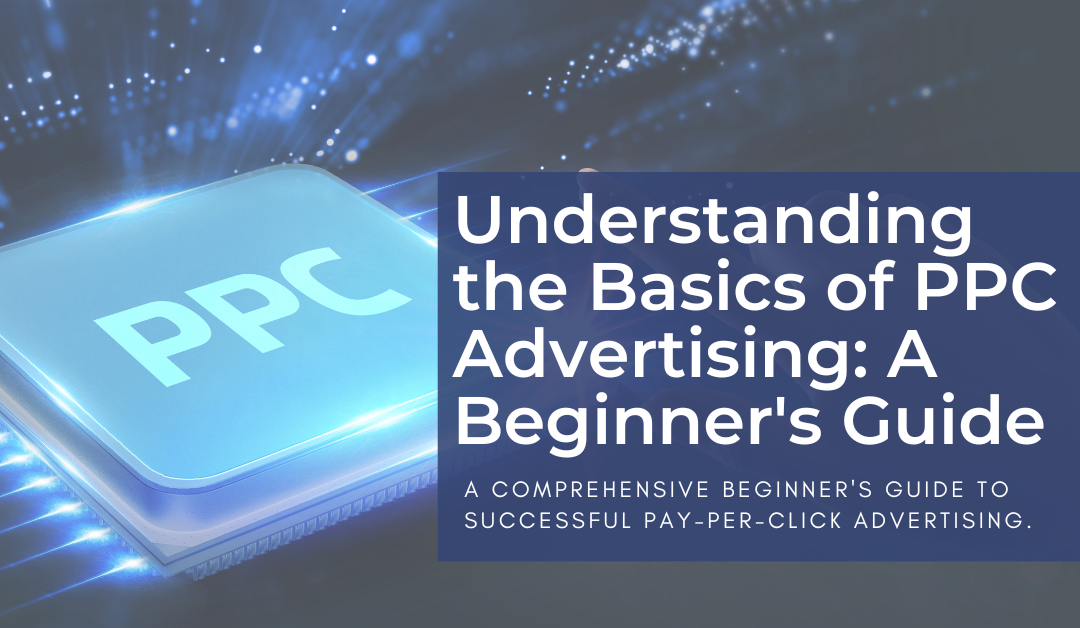Pay-Per-Click Advertising, often abbreviated as PPC, is a powerful digital marketing strategy that allows businesses to drive targeted traffic to their websites and increase their online visibility. In this beginner’s guide, we will explore the basics of PPC advertising, how it works, and the significant benefits it offers to businesses seeking to grow their online presence.
Definition of Pay-Per-Click Advertising
At its core, PPC Advertising is a model in which advertisers pay a fee each time one of their ads is clicked by a user. It is an auction-based system where advertisers bid on specific keywords or target audience criteria. When a user’s search query or online behavior aligns with those keywords or criteria, their ad is displayed. This targeted approach ensures that the ads are shown to users who are likely to be interested in the products or services being offered.
How PPC Works
Understanding how PPC works is fundamental to grasping its importance as a marketing tool. When a user enters a search query or interacts with online content that matches the keywords or audience criteria set by the advertiser, an ad auction takes place. The search engine or platform then determines which ads are eligible to appear and in which order based on factors like bid amount, ad relevance, and ad extensions.
The term “Pay-Per-Click” originates from the fact that advertisers only pay when someone clicks on their ad, rather than paying for ad space upfront. This payment model allows businesses to have better control over their budget and focus on driving actual traffic to their websites.
Benefits of PPC Advertising
PPC advertising offers a range of benefits that make it an attractive choice for businesses of all sizes. Some of the key advantages include:
- Instant Visibility: Unlike organic search efforts, PPC ads can be launched quickly and appear at the top of search engine results pages almost immediately. This instant visibility helps businesses reach their target audience without waiting for lengthy SEO efforts to take effect.
- Targeted Audience Reach: PPC allows precise targeting based on various factors such as keywords, demographics, location, device, and even time of day. This level of granularity ensures that ads are shown to the right people at the right time. Therefore, increasing the likelihood of conversions.
- Measurable Results: PPC platforms provide detailed analytics and performance metrics, enabling advertisers to track the effectiveness of their campaigns in real time. This data-driven approach allows for constant optimization and better return on investment (ROI).
- Cost Control: Advertisers have full control over their PPC budget, with the ability to set daily or monthly caps. This ensures that they never exceed their intended spending limits and can scale their advertising efforts according to their financial capacity.
- Brand Exposure: Even if users don’t click on the ad, the exposure gained from ad impressions can contribute to increased brand awareness and recognition.
PPC Advertising is a valuable digital marketing tool that offers businesses the ability to drive targeted traffic to their websites, achieve immediate visibility, and measure the effectiveness of their campaigns. By understanding the basics of PPC, businesses can harness the power of this advertising model to reach their marketing goals effectively.
Key Components of a PPC Campaign (Basics of PPC)
Running a successful Pay-Per-Click (PPC) campaign requires a thoughtful approach and an understanding of its key components. In this section, we will delve into the fundamental elements that make up a well-structured PPC campaign. This will help you grasp the basics of PPC and set the stage for achieving your advertising objectives.
Keywords and Keyword Research
Keywords are the foundation of any PPC campaign. These are the search terms or phrases that trigger the display of your ads when users enter them into search engines or online platforms. Effective keyword research is essential to identify relevant and high-performing keywords that align with your business offerings. Tools like Google’s Keyword Planner can aid in discovering potential keywords and estimating their search volume and competitiveness.
Optimization for “Basics of PPC”: In a PPC campaign, the selection of the right keywords is crucial for success. Adequate keyword research ensures that your ads are shown to the right audience. This enhances the overall performance of your PPC campaign.
Ad Copy Creation
Crafting compelling ad copy is an art that entices potential customers to click on your ads. Your ad copy should be concise, engaging, and clearly communicate the unique selling points of your products or services. Incorporate relevant keywords into the ad text to increase its relevance to users’ search queries. A strong call-to-action (CTA) is vital to prompt users to take the desired action, such as making a purchase or filling out a form.
Optimization for “Basics of PPC”: Writing persuasive ad copy that includes targeted keywords can significantly impact the click-through rate (CTR) of your ads. This will ultimately lead to improved campaign performance.
Landing Pages Optimization
Once users click on your ads, they should be directed to dedicated landing pages that are optimized for conversions. Landing pages must be relevant to the ad content and provide a seamless user experience. Design the landing pages with clear and compelling CTA’s, keeping in mind the user’s journey from the ad to the conversion point. A well-optimized landing page increases the chances of converting visitors into valuable leads or customers.
Optimization for “Basics of PPC”: Creating optimized landing pages ensures a smooth user experience and maximizes the conversion potential of your PPC campaign.
Ad Extensions and Their Importance
Ad extensions are additional pieces of information that expand your ad and provide more value to users. Common ad extensions include site links, call extensions, location extensions, and callout extensions. By utilizing ad extensions, you can increase ad visibility and provide users with more relevant information. This will lead to higher engagement rates.
Optimization for “Basics of PPC”: Implementing ad extensions can improve the visibility and relevance of your ads, encouraging users to click through and explore your offerings further.
In summary, a successful PPC campaign relies on mastering the key components of keyword research, creating compelling ad copy, optimizing landing pages, and leveraging ad extensions. By understanding the basics of PPC and honing these elements, you can create effective PPC campaigns that drive targeted traffic and deliver measurable results for your business.
Choosing the Right PPC Platform (Basics of PPC)
When venturing into the world of PPC advertising, selecting the most suitable platform is a crucial step toward achieving your goals. Each platform has its strengths and audience reach. Understanding the basics of PPC platforms will empower you to make an informed decision that aligns with your target audience and advertising objectives.
Google Ads (formerly Google AdWords)
Basics of PPC on Google Ads: As the largest and most popular search engine, Google offers a vast advertising network through Google Ads. This platform enables businesses to display their ads across Google’s search engine results pages, partner websites, and even on YouTube. With a massive user base, Google Ads provides extensive targeting options. Therefore, allowing advertisers to reach potential customers based on their search intent and behavior.
Bing Ads (Microsoft Advertising)
Basics of PPC on Bing Ads: Bing Ads, now known as Microsoft Advertising, serves ads on Bing, Yahoo, and other partner sites. While Bing has a smaller market share compared to Google, it still reaches a substantial audience, especially in certain demographics or regions. Additionally, Bing Ads often offers lower costs per click (CPC) and less competition. Thus, making it an attractive option for businesses with a specific target market.
Social Media PPC Platforms
Basics of PPC on Social Media Platforms: Social media platforms like Facebook, Twitter, and LinkedIn offer PPC advertising opportunities to businesses seeking to target specific audiences based on demographics, interests, and behaviors. Facebook Ads, for instance, allow businesses to create highly engaging ads and target users with precision. Twitter Ads enable promotions to a vast user base interested in real-time content. LinkedIn Ads cater to a professional audience, making it ideal for B2B marketing.
Other PPC Platforms
Basics of PPC on Other Platforms: Depending on your industry and target audience, you might find value in exploring other PPC platforms. Amazon Advertising, for example, caters to e-commerce businesses, enabling them to promote products directly to Amazon shoppers. Pinterest Ads can be advantageous for brands with visually appealing products or content. It allows promotion through pins and showcases.
Optimization for “Basics of PPC”: When understanding the basics of PPC, selecting the right platform is crucial. Each PPC platform mentioned above offers unique opportunities for businesses to reach their target audience effectively. Evaluating your goals, budget, and target demographics will guide you in choosing the most appropriate PPC platform to maximize the impact of your advertising efforts.
In conclusion, choosing the right PPC platform is a vital aspect of launching a successful PPC campaign. By understanding the basics of PPC and considering the strengths and advantages of each platform, you can make an informed decision that aligns with your business objectives and ensures optimal results for your advertising investment.
Setting Up a Successful PPC Campaign (Basics of PPC)
Launching a successful Pay-Per-Click (PPC) campaign requires careful planning and execution. By following a structured approach and understanding the basics of PPC, you can set up a campaign that maximizes your reach, engages your target audience, and drives valuable results for your business.
Define Campaign Objectives and Goals
Basics of PPC Campaign Objectives: Before diving into campaign setup, clearly outline your objectives and goals. Whether you aim to increase website traffic, generate leads, boost sales, or enhance brand awareness, defining your goals will shape the entire campaign strategy and help measure success effectively.
Budget Planning and Bid Strategies
Basics of PPC Budgeting: Establish a realistic budget that aligns with your campaign objectives and overall marketing plan. Allocate funds to specific campaigns or ad groups based on priority and expected returns. Additionally, consider implementing bid strategies that optimize your bids to achieve the desired outcomes while staying within budget.
Targeting and Audience Segmentation
Basics of PPC Targeting: Effective targeting ensures your ads reach the right audience. Leverage the targeting options available on your chosen PPC platform, such as location targeting, demographic targeting, and device targeting. Audience segmentation allows you to tailor ad content and bids for different audience segments, improving ad relevance and performance.
Ad Scheduling and Geographic Targeting
Basics of PPC Ad Scheduling: Consider when your target audience is most active and likely to engage with your ads. Schedule your ads to display during peak times to maximize visibility and increase the likelihood of conversions. Geographic targeting enables you to show ads to users in specific locations, ensuring your ads reach the most relevant audience.
Optimization for “Basics of PPC”: Setting up a successful PPC campaign involves defining clear objectives, allocating an appropriate budget, targeting the right audience, and optimizing ad scheduling and geographic targeting. Understanding the basics of PPC campaign setup is essential to achieving your desired outcomes.
Conversion Tracking and Implementation
Basics of PPC Conversion Tracking: Implement conversion tracking to measure the actions users take after clicking on your ads, such as purchases, form submissions, or sign-ups. Conversion data provides valuable insights into campaign performance, allowing you to refine your strategies and allocate budget effectively.
Ad Copy and Landing Page Optimization
Basics of PPC Ad Optimization: Craft compelling ad copy that aligns with your keywords and resonates with your target audience. A/B test different ad variations to identify high-performing copies. Ensure that your landing pages are optimized for conversions, providing a seamless user experience and clear calls-to-action.
Optimization for “Basics of PPC”: Optimizing your ad copy and landing pages is critical for increasing ad relevance and driving higher click-through rates (CTRs) and conversions.
Monitor and Analyze Campaign Performance
Basics of PPC Performance Analysis: Regularly monitor your campaign performance and analyze key metrics such as CTR, conversion rate, and return on ad spend (ROAS). Identify areas for improvement and make data-driven adjustments to optimize your campaign continually.
By following the basics of PPC campaign setup, you can create a well-structured, targeted, and optimized campaign that yields significant results for your business. Setting clear objectives, allocating an appropriate budget, targeting the right audience, and optimizing ad content are vital steps in building a successful PPC campaign. Regularly analyzing campaign performance and making data-driven adjustments will further enhance the effectiveness of your PPC efforts.
Tracking and Measuring PPC Performance (Basics of PPC)
A crucial aspect of running a successful Pay-Per-Click (PPC) campaign is tracking and measuring its performance. Understanding the basics of PPC performance metrics allows you to gauge the effectiveness of your advertising efforts. It allows you to identify areas for improvement, and optimize your campaign for better results. In this section, we will explore the key performance indicators (KPIs) and tracking techniques essential for evaluating the success of your PPC campaign.
Understanding Key Performance Indicators (KPIs)
Basics of PPC Performance Metrics: Key Performance Indicators are specific metrics used to assess the performance and success of your PPC campaign. The primary KPIs include:
- Click-Through Rate (CTR): CTR measures the percentage of users who click on your ad after viewing it. A higher CTR indicates that your ad is relevant and engaging to your target audience.
- Conversion Rate: The conversion rate calculates the percentage of users who complete a desired action, such as making a purchase or filling out a form, after clicking on your ad. A high conversion rate reflects the effectiveness of your ad and landing page in driving desired outcomes.
- Return on Ad Spend (ROAS): ROAS is a metric that measures the revenue generated for every dollar spent on advertising. It helps you understand the profitability of your campaign and guides budget allocation.
Conversion Tracking and Implementation
Basics of PPC Conversion Tracking: Implement conversion tracking on your website to accurately measure actions that users take after clicking on your ads. Conversion tracking can be set up for various goals, such as completed purchases, sign-ups, downloads, or form submissions. By tracking conversions, you gain valuable insights into which keywords, ads, and campaigns are driving the most valuable results.
Analyzing Campaign Data and Making Data-Driven Decisions
Basics of PPC Data Analysis: Regularly review your campaign data to gain insights into its performance. Analyze the KPIs mentioned earlier to identify top-performing ads and campaigns. Use this data to make decisions for optimization, such as adjusting bids, refining ad copy, or reallocating budget to high-performing campaigns.
Optimization for “Basics of PPC”: Tracking and measuring PPC performance through key performance indicators (KPIs) and conversion tracking is essential for understanding the impact of your advertising efforts.
A/B Testing for Ad Performance Improvement
Basics of PPC A/B Testing: A/B testing involves running two or more ad variations simultaneously to determine which one performs better. Test different ad copies, headlines, or CTA’s to discover the most effective combinations that resonate with your audience and drive higher engagement.
Bid and Budget Optimization Techniques
Basics of PPC Bid and Budget Optimization: Optimize your bids based on the performance of keywords and ad groups. Adjust bids for high-performing keywords to ensure they receive sufficient visibility. Similarly, allocate budget to campaigns that demonstrate positive ROI and reallocate funds from underperforming campaigns.
Tracking and measuring PPC performance using key performance indicators (KPIs), conversion tracking, and data analysis is crucial for evaluating the success of your PPC campaign. By understanding the basics of PPC performance metrics, you can make informed decisions, optimize your advertising efforts, and achieve higher returns on your investment. Regularly monitoring and refining your campaign based on data insights will lead to continuous improvement and better overall performance of your PPC campaigns.
Optimizing PPC Campaigns for Success (Basics of PPC)
While launching a Pay-Per-Click (PPC) campaign is essential, continuous optimization is equally crucial for achieving long-term success. Understanding the basics of PPC optimization empowers you to refine your strategies, improve campaign performance, and maximize the return on your advertising investment. In this section, we will explore key optimization techniques to enhance the effectiveness of your PPC campaigns.
A/B Testing for Ad Performance Improvement
Basics of PPC A/B Testing: A/B testing involves creating multiple variations of your ads and comparing their performance to identify the most effective elements. Test different ad copies, headlines, calls-to-action, and even visuals to understand which versions resonate best with your target audience. Implementing the findings of A/B tests can significantly boost click-through rates (CTR) and conversion rates.
Bid and Budget Optimization Techniques
Basics of PPC Bid and Budget Optimization: Continuously monitor the performance of your keywords, ad groups, and campaigns to optimize bids and budget allocation. Increase bids for high-performing keywords to improve ad position and visibility. On the other hand, lower bids for less effective keywords to avoid overspending. Allocate budget based on the performance and potential of campaigns to maximize returns.
Keyword Optimization and Negative Keywords
Basics of PPC Keyword Optimization: Regularly review and refine your list of keywords to ensure relevance and performance. Add new keywords based on market trends and user behavior. Eliminate low-performing or irrelevant keywords that drain your budget. Also, identify and add negative keywords to prevent your ads from showing up in irrelevant search queries, thus reducing wasted ad spend.
Optimization for “Basics of PPC”: Continuous optimization through A/B testing, bid and budget adjustments, and keyword optimization is essential for achieving success in your PPC campaigns.
Improving Quality Scores
Basics of PPC Quality Scores: Quality Score is a metric used by PPC platforms to assess the relevance and quality of your ads and landing pages. A higher Quality Score can lead to lower costs per click (CPC) and better ad rankings. Focus on creating highly relevant ad copy, selecting targeted keywords, and optimizing your landing pages to improve Quality Scores.
Ad Rank and its Importance
Basics of PPC Ad Rank: Ad Rank determines the position of your ad on search engine results pages. It is influenced by bid amount, ad quality, and expected impact of ad extensions. By improving your ad quality and optimizing relevant extensions, you can increase your Ad Rank, leading to better ad positioning and visibility.
Optimizing PPC campaigns is a continuous process that involves A/B testing, bid and budget adjustments, keyword optimization, improving Quality Scores, and understanding Ad Rank. Embracing the basics of PPC optimization allows you to refine your strategies, enhance ad performance, and achieve optimal results from your advertising efforts. By actively monitoring and optimizing your campaigns, you can keep up with market trends, customer behavior, and changes in the PPC landscape, ultimately driving greater success and growth for your business.
Avoiding Common PPC Mistakes (Basics of PPC)
Running a successful Pay-Per-Click (PPC) campaign requires careful planning and execution. However, even the most well-intentioned efforts can be derailed by common PPC mistakes. Understanding the basics of PPC and being aware of these pitfalls will help you avoid costly errors and ensure your campaigns deliver the desired results. In this section, we will explore some of the most prevalent PPC mistakes and how to steer clear of them.
Overbidding and Overspending
Basics of PPC Bid Management: One of the most common PPC mistakes is overbidding on keywords and overspending on your budget. While bidding higher might improve ad position, it can also exhaust your budget quickly without guaranteeing better results. Be strategic with your bids, focusing on high-performing keywords and optimizing your budget allocation to maximize returns.
Ignoring Quality Score and Ad Relevance
Basics of PPC Quality Score: Ignoring Quality Score can be detrimental to your PPC success. A low Quality Score results in higher CPC and lower ad rankings, reducing your ad’s visibility and profitability. Prioritize ad relevance, keyword selection, and landing page optimization to improve your Quality Score and achieve better ad performance.
Neglecting Mobile Users
Basics of PPC Mobile Optimization: In today’s mobile-centric world, neglecting mobile users can lead to missed opportunities. Ensure your landing pages and ads are optimized for mobile devices to provide a seamless user experience. Failure to cater to mobile users can result in lost conversions and decreased ad performance.
Failing to Test and Optimize
Basics of PPC Testing and Optimization: Neglecting A/B testing and ongoing optimization can hinder your campaign’s success. A/B testing allows you to identify the best-performing ad elements, while continuous optimization ensures your campaigns stay relevant and effective. Regularly review campaign data, make data-driven decisions, and refine your strategies accordingly.
Optimization for “Basics of PPC”: Avoiding common PPC mistakes is crucial for achieving success and maximizing the impact of your PPC campaigns.
By understanding the basics of PPC and being vigilant about potential pitfalls, you can avoid common PPC mistakes and set your campaigns up for success. Overbidding, disregarding Quality Score, neglecting mobile optimization, and failing to test and optimize are common pitfalls that can be avoided with careful planning and ongoing monitoring. Taking a proactive approach to optimizing your PPC campaigns will lead to better performance, increased return on investment, and ultimately, the achievement of your marketing goals. Remember, staying informed and continuously learning in the ever-evolving world of PPC is key to maintaining a successful advertising strategy.
PPC Advertising Trends and Future Insights (Basics of PPC)
The world of PPC advertising is dynamic and ever-evolving, with new trends and insights shaping the way businesses connect with their audiences. Understanding the basics of PPC advertising trends and keeping an eye on future insights will help you stay ahead in the digital marketing landscape. In this section, we will explore some current PPC trends and provide insights into what the future might hold for this powerful advertising model.
The Impact of Voice Search on PPC
Basics of PPC and Voice Search: With the rising popularity of voice-enabled devices and virtual assistants, voice search is transforming how users interact with search engines. As users increasingly use voice commands to search for information, businesses must adapt their PPC strategies to incorporate voice-friendly keywords and long-tail phrases. Optimizing for voice search can enhance your ad’s visibility and relevance, reaching users at the moment of their search intent.
AI and Automation in PPC Campaigns
Basics of PPC Automation: Artificial Intelligence (AI) and automation are revolutionizing PPC campaigns by streamlining processes and improving efficiency. Automated bidding and ad optimization allow advertisers to leverage machine learning algorithms to adjust bids in real time based on historical data and performance trends. AI-powered tools can analyze vast amounts of data to identify patterns and insights. This helps advertisers make data-driven decisions and optimize campaigns effectively.
Shoppable Ads and E-commerce Integration
Basics of Shoppable Ads: Shoppable ads are gaining traction, especially in the e-commerce sector. These ads enable users to make purchases directly from the ad unit without leaving the platform. Shoppable ads offer a seamless shopping experience, reducing friction in the conversion process and increasing the likelihood of immediate purchases. Integrating your e-commerce platform with shoppable ads can enhance your sales funnel and drive more direct conversions.
Privacy and Data Protection
Basics of PPC and Privacy Concerns: As data privacy regulations become more stringent, advertisers must prioritize user privacy and data protection. Platforms may limit targeting options and access to user data. Therefore, making it essential to focus on first-party data collection and user consent. Advertisers will need to strike a balance between personalized targeting and respecting user privacy.
Video and Interactive Ads
Basics of PPC Video Ads: Video and interactive ads are gaining popularity due to their engaging nature. Platforms like YouTube and social media networks offer video ad formats that capture users’ attention and encourage interaction. Incorporating video ads into your PPC strategy can boost brand awareness and engagement, especially among younger audiences.
The world of PPC advertising is continuously evolving, with new trends and insights shaping the landscape. Embracing the basics of PPC advertising trends, such as optimizing for voice search, leveraging AI and automation, embracing shoppable ads, prioritizing user privacy, and utilizing engaging video formats, will be crucial for advertisers seeking success in the digital marketing arena. As technology continues to advance, staying informed and adaptable will be essential to maintaining a competitive edge and driving meaningful results from your PPC campaigns.
Final Thoughts
Mastering the basics of PPC advertising is the key to unlocking the full potential of this powerful digital marketing strategy. By understanding how PPC works, the essential components of a successful campaign, and the importance of tracking and optimization, you can create targeted, measurable, and highly effective campaigns that drive tangible results for your business.
Throughout this beginner’s guide, we’ve explored the fundamental aspects of PPC. This includes keyword research, ad copy creation, landing page optimization, and the significance of choosing the right PPC platform. We’ve also discussed how to track and measure PPC performance through key performance indicators (KPIs) and conversion tracking. We’ve also highlighted the essential role of continuous optimization in ensuring your campaigns thrive.
As the PPC landscape evolves, staying informed about emerging trends is crucial for staying ahead of the competition. Voice search, AI and automation, shoppable ads, and privacy considerations are among the trends shaping the future of PPC. Embracing these trends and adapting your strategies accordingly will position you for success in the dynamic digital marketing ecosystem.
Are you ready to take your PPC campaigns to the next level and drive exceptional results for your business? Contact Darksky Digital today to partner with a team of skilled and experienced PPC experts. We specialize in crafting data-driven PPC strategies tailored to your unique goals, helping you reach your target audience, maximize your ROI, and achieve sustainable growth.
Don’t miss out on the immense potential of PPC advertising. Contact us now and let Darksky Digital elevate your online presence to new heights.
Ready to supercharge your PPC campaigns and grow your business? Contact Darksky Digital today and let our team of experts design a customized PPC strategy to meet your goals. Visit our contact page at https://darksky.digital/contact to get started!
View more of our blog posts:
- Understanding the Basics of Pay-Per-Click Advertising: A Beginner’s Guide

- 5 Types of Content Every Marketer Should Know About

- The Impact of Customer Reviews on Your Online Reputation

- Measuring the ROI of Your Social Media Marketing Campaign: Unraveling the Secrets to Digital Success

- Content Marketing vs. Traditional Advertising: Which is More Effective?

- Title: The Future of SEO: Unlocking the Secrets to Digital Success


